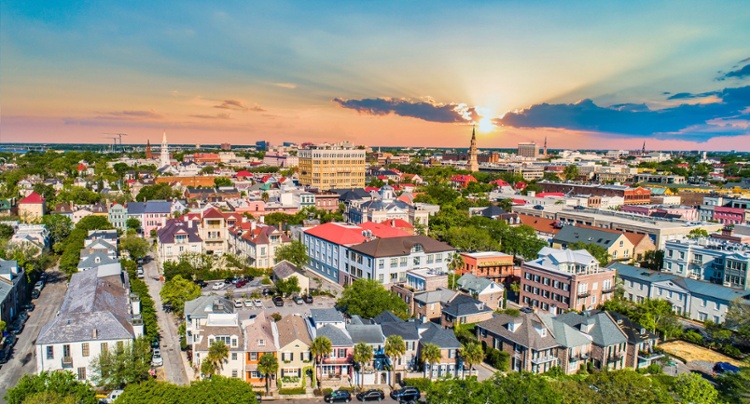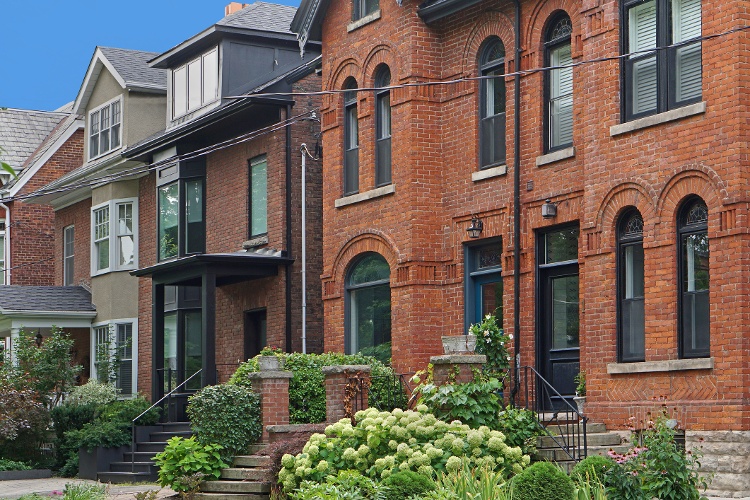At one point or another, most single-family investors get the urge to expand into another type of investment property. More often than not, the property they choose to own is a multi-family home.
A small multi-family home can boost your cash flow, grow your property portfolio faster, and is easy to finance, making it the perfect choice for beginning investors or experienced owners looking for something different.
Definition of a Multi Family Home
A multi-family home is a property that has more than one unit to live, each with its own kitchen and bathroom.
Examples of multi-family homes include a house with an attic or garage converted into a living space with a kitchen and bathroom, multi-unit properties with two, three or four units, and medium and large size apartment buildings and complexes.

Types of Multi-Family Homes
Multi-family home types are categorized by the number of rental units or “doors” that each property contains:
- Duplex: 2 dwelling units side-by-side or stacked as a first and second floor. Each unit has its own separate entrance, oftentimes with a shared porch, front and back yard, and parking area.
- Triplex: 3 dwelling units arranged next to each other or as a three-story configuration, also known as a “three flat” in some markets.
- Fourplex: 4 dwelling units configured side-by-side or with two first-floor units and two second-floor units.
- Townhouse: Attached houses side-by-side with private entrances, also known as a “row house” in some markets.
Laundry facilities in multi-family homes are sometimes shared, depending on how the property was constructed. With common area facilities like these, landlords pay the cost of water and electricity then pass the additional expense through to the tenant.

Benefits of Investing in a Multi Family Home
Investing in smaller multi-family homes is a perfect strategy to follow if you’re looking for consistent cash flow plus slow and steady appreciation in market value. Top benefits of investing in a multi-family home include:
1. More cash flow
Although the gross rent from a house may be higher than the individual unit rents in a multi-family home, the cumulative cash flow will be more with a multi-family investment.
For example, if market rents for a single-family house are $1,000 and each unit in a duplex rents for $650 per month, you’re generating 30% more - $300 extra per month - in gross cash flow.
Because the square footage of a multi-family unit is usually less than a house, your per-unit operating expenses can be lower as well, providing an extra boost to your bottom line.
2. Less vacancy risk
When you own a single-family home and the tenant leaves, two things happen: Your vacancy rate is 100% and your cash flow is negative for as long as it takes to find a qualified tenant.
On the other hand, owning a multi-family home makes it highly unlikely every unit will go vacant at the same time.
While no investor likes to lose rental income due to vacancy, when you buy a multi-family home using conservative leverage, it’s quite likely that the rental income from the occupied units will pay for the mortgage and operating expenses until you can find a replacement tenant.
3. Flexible financing options
In most markets you can finance a small multi-family home the same way you would buy a house, using a conventional, FHA, or VA loan. Depending on the lender, interest rates may be a little higher and capital reserve accounts required by the lender may be larger.
4. Easier to increase valueUnless you have a high-risk strategy of fixing-and-flipping, there’s only so much you can do to increase the value of a single-family house.
Part of the reason is that, in many markets, owner-occupants are the primary buyers of houses and not investors. So, even if the cap rate of your rental house implies a market value of $150,000, if similar houses are selling for $125,000 yours will too.
By contrast, multi-family homes are valued in large part based on the net operating income (NOI) they generate. This means that any value add work you do that leads to higher rents and a bigger NOI will also increase the market value of your multi-family home.
5. Quickly grow your property portfolioWhile single-family home investors think in terms of “houses,” multi-family investors think in terms of “doors” or units under ownership. Each unit of a multi-family property generates its own individual stream of cash flow.
Since most investors build property portfolios for the cash flow generated, investing in multi-family homes is an easy way to cost-effectively scale up your property portfolio without having to find and finance one individual house at a time.

Drawbacks of Investing in a Multi Family Home
Before you decide to take the plunge and invest in a multi-family home, be sure to consider these potential drawbacks to avoid getting caught off guard:
- Purchase price per square foot may be higher than with a single-family house
- Insurance premiums may be more expensive
- Capital reserve or emergency fund accounts required by the lender may be larger
- More difficult to diversify geographically, since all of your units are part of the same property in a single place
- Limited exit strategy because your likely buyer is another investor
“House hacking” – living in one unit while renting the other units out -- is a phrase that’s often touted as one of the advantages of buying a multi-family home.
However, in real life, house hacking isn’t nearly as attractive as it sounds. That’s why most multi-family home investors hire a local property manager to promptly handle repairs, deal with tenant issues, and get vacant units rented quickly.

Single-Family vs. Multi-Family Homes
Single-family houses and multi-family homes are the two most popular options for residential property investors. Here’s a quick look at the pros and cons of each:
Single-family homes
- Pros:
- Easy to find in any market
- Perfect for families or tenants who want privacy
- Multiple exit strategy by selling to an owner-occupant, another investor, or the tenant
- Cons:
- Limited opportunity for adding value and increasing rental income
- Harder to scale up a portfolio if you’re buying one house at a time
- Some houses are in an HOA, creating an additional expense and potential complaints from a hyper-active association manager
Multi-family homes
- Pros:
- Financing is similar to buying a single-family house
- Multiple units help keep occupancy levels high
- Easy way to jump-start a real estate investing business by adding multiple units to your property portfolio
- Cons:
- Tenant management can be difficult without a local property manager
- Higher potential operating expense due to a greater amount of tenant turnover
- Limited exit strategy of selling to another investor
Tips for Investing in Multi-Family Rental Property
Investing in a multi-family property is a little more complicated than buying a single-family house because there are more variables or “moving parts.” Each unit has its own set of fixtures and appliances, different tenants, and opportunity for adding value.
1. Location
Oftentimes the best multi-family home investments are found near large apartment buildings. While apartment tenants may not be able to afford to rent a house, they frequently see living in a small multi-family home as a step up from apartment living.
Other factors that make a location good for multi-family housing include markets with strong growth, a high housing affordability index, and nice neighborhoods to attract a wider range of potential tenants.
2. Unit countDuplex, triplex, and four-plex multi-family homes are a good way to begin investing in multi-family property without the higher risk of larger apartment buildings.
Rental property with a smaller unit count can also offer the largest amount of upside potential while still being affordable to buy.
3. Income potentialWhen researching multi-family homes to purchase, it’s a good idea to conduct a “reality check” by verifying the current rents are “at market” instead of taking the seller’s word for it.
Rentometer lets you compare your rent to other similar local properties, while RENTCafé is a great way to learn what the larger apartment operators are charging for rent.
Multi-family homes may also offer more opportunity for creating additional incremental revenue streams, such as a coin-operated laundry, premium covered parking, high-speed internet service, and security systems.
4. Seller motivationUnderstanding the seller’s hot buttons in any real estate transaction is one of the best ways to make a great deal. Experienced investors know that the motivation of a seller isn’t always about price.
Sometimes, a seller needs a quick close of escrow to avoid a pre-foreclosure. Other times, there may be deferred maintenance the seller can’t afford or a problem tenant that the current owner doesn’t have the skills to deal with. The better understanding you have of why the seller is really selling, the greater your potential savings will be.

Good Markets for Multi-Family Homes
There are several characteristics that nearly all good multi-family home markets have in common:
- Solid job growth and a diverse employment base that isn’t dependent on a single industry or company
- New construction is an indication of how the big developers and private equity investors see the real estate market growing
- Large number of big apartment buildings and complexes indicate the demand for multi-family rental property is strong and provide a source for potential tenants looking for a nicer place to live
- Housing affordability index where markets with the highest indexes of 150 or more are the least affordable places to own a home
- Percentage of renter-occupied households, ideally 50% or higher, indicates the demand for rental property is growing due to population and job growth and the high cost of buying a home
- Market vacancy rates near the national average of between 4% and 6%
- Cap rates similar to or greater than single-family homes in the same market, although higher caps may signal increased risk
- Average historical rent growth of at least 4%, slightly higher than the national average
- Lower cost per unit compared to a single-family house, although the total purchase price may be higher than buying a home









